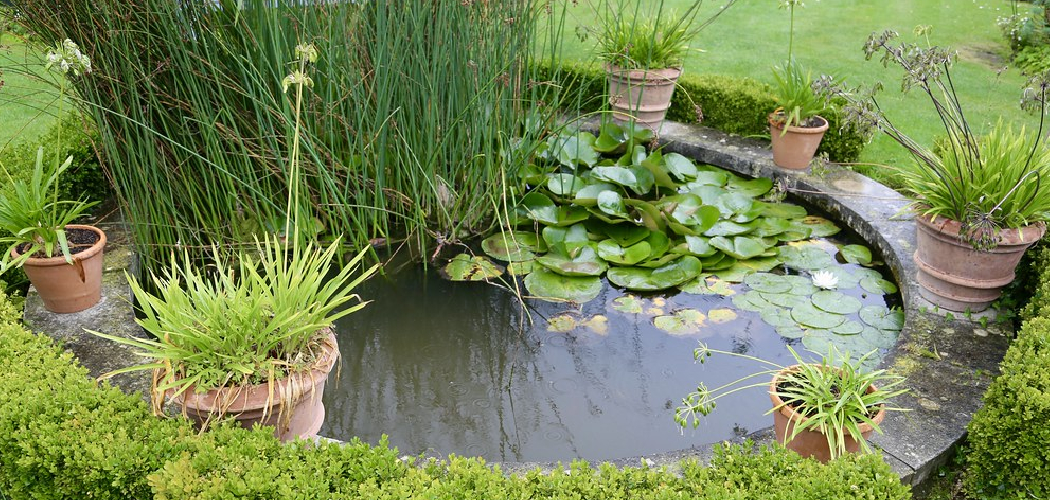It’s not uncommon for small backyard ponds to start turning green due to an uptick in algae growth. While it might seem like a lost cause, there are many steps on how to keep small pond from turning green you can take to keep your pond from becoming overrun with this pesky plant.
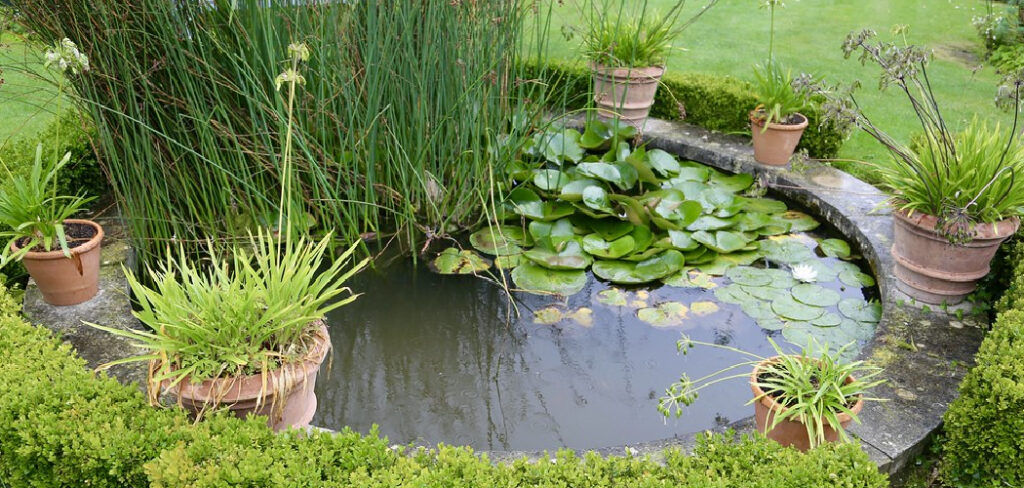
From selecting the right fish to striving for proper balance in your ecosystem, there are plenty of tricks and techniques you can use to help preserve clean water and discourage algal growth. In this article, we’ll cover some of the best ways you can combat unwanted algae in your small pond and get back that pristine look! Read on for more information about keeping green water out.
Reasons Why Pond Turns Into Green
Algae is a common cause of green water in your pond, and there are several reasons why it might be happening. Too much sunlight can stimulate the growth of algae, so if your pond gets direct sun all day, that’s likely one issue you need to address. Overstocking with fish or having too high of a nutrient count can also promote algae growth, so you’ll need to look at those elements too.
Finally, if there are any underlying issues with your pond’s filtration system or water chemicals, that can be a contributing factor as well. Taking the time to identify the root cause of your green water will help you better tailor solutions for resolving it.
Required items
- Net
- Water test kit
- Pond filter system
- Aquatic plants
- Fish
- Algaecide treatments
10 Ways How to Keep Small Pond From Turning Green
1. Aerate the Pond
A simple way to reduce algae growth is to introduce more oxygen into the water. This can be done through a pump, fountain, or aerator. These devices will help circulate oxygen-rich water throughout your pond and discourage algae from taking hold.
2. Control Fish Feeding
Another helpful tip is to limit the amount of food you give your fish. Overfeeding can lead to an accumulation of uneaten food and excess nutrients in the water. This, in turn, will stimulate algae growth that could otherwise have been avoided by controlling how much food you’re giving your fish.
3. Plant Aquatic Plants
Aquatic plants are a great way to naturally reduce nutrient levels in the water. Without these nutrients, algae won’t be able to thrive. Choose low-maintenance species like water lilies and lotuses for the best results.
4. Install a Pond Filter System
Installing a pond filter system will help remove excess nutrients from the water as well as solid waste. This will go a long way in keeping your pond clean and clear of algae.
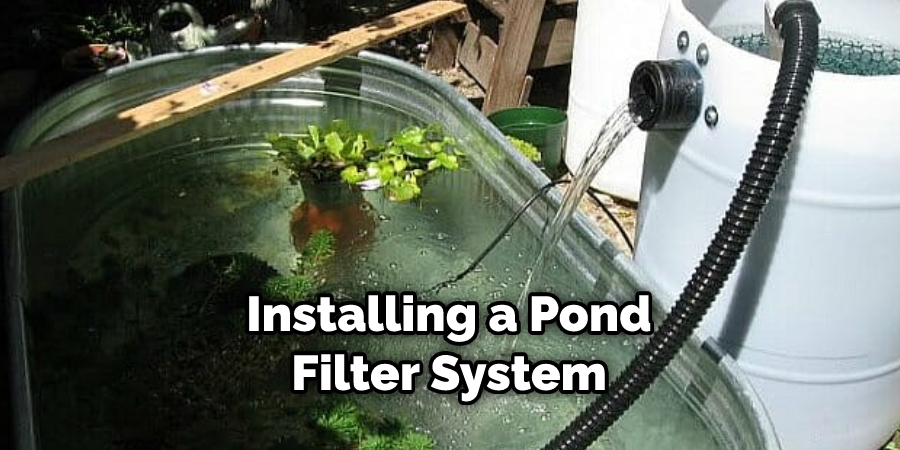
5. Utilize Biological Controls
Using biological controls, such as water fleas or snails, can help reduce the number of algae in your pond by competing with it for nutrients and space. These creatures are effective at controlling algal blooms without introducing any chemicals into the water.
6. Use Algae-Fighting Bacteria
Algae-fighting bacteria are natural microorganisms that can help reduce the number of algae in your pond by consuming excess nutrients that would otherwise feed the algal blooms. These beneficial bacteria will also form a protective biofilm on the surfaces of rocks and plants, making it difficult for algae to take hold.
7. Use Algaecide Treatments
If none of the other options have worked, then you may want to consider using algaecide treatments. These chemical products will help kill off existing algae and prevent future blooms from forming. Be sure to follow directions carefully when handling any chemicals, as improper use could harm other life in your pond.
8. Limit Sunlight Exposure
Algae need sunlight to photosynthesize, so limiting the amount of light that enters your pond can help reduce algae growth. Try using shade cloths or installing floating plants to cover a portion of the surface area and block out some of the sun’s rays.
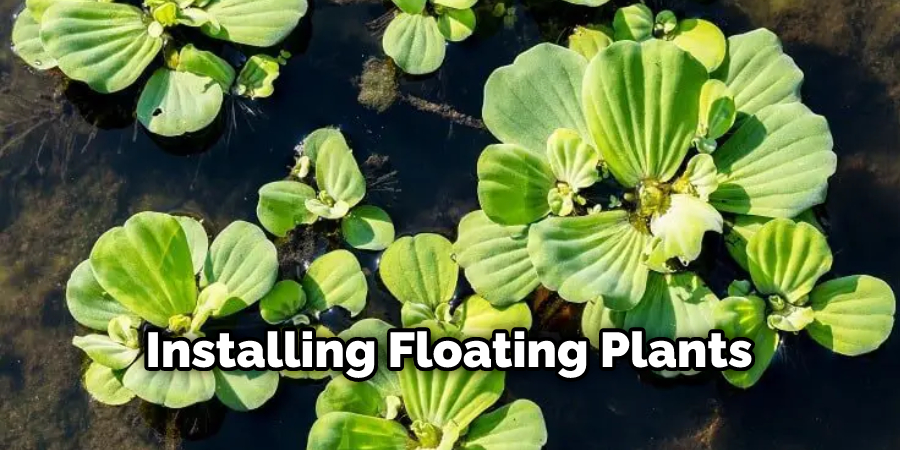
9. Clean the Pond Regularly
Regular maintenance and cleaning are essential for keeping your pond clean and clear of algae. Skim debris off the surface, vacuum any sludge from the bottom, and replace water that has been splashed out or evaporated.
10. Test the Pond Water Regularly
Testing your pond water on a regular basis will help you determine what kind of algae is growing and how much of it there is. This can help you diagnose any problems and take the steps necessary to keep your pond clean and clear.
By following these tips, you’ll be able to effectively combat unwanted algal growth in your small pond and restore that beautiful, crystal-clear water. With a little bit of work and dedication, you can keep your pond looking great all season long!
8 Maintenance Tips to Prevent Algae Growth in Your Pond
1. Monitor Water Quality
Keeping an eye on your pond’s water quality is the first step in preventing algae growth, as changes in pH, nitrogen, and phosphorus levels can all contribute to an algal bloom. Test your water regularly and adjust accordingly if you notice any abnormalities.
2. Ensure Proper Filtration
Having a good filtration system in place is key to keeping your pond clean and clear. Make sure your filter is capable of handling the size of your pond and is able to filter out large particles such as leaves and dirt.
3. Avoid Overfeeding Fish
Overfeeding fish can cause an abundance of nutrients in the water, which can lead to algae growth. Thus, it’s important to only feed your fish once a day and in small amounts.
4. Increase Water Circulation
Continuous water circulation helps keep the nutrients that algae feed on at bay and prevents them from settling on the surface of your pond. You can do this by using a quality pump or fountain to ensure that the water is constantly moving.
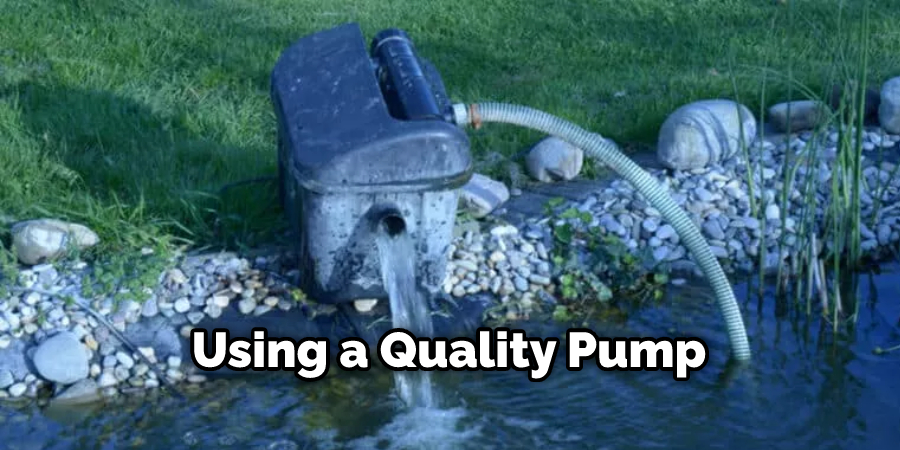
5. Manage Plant Growth
Properly managing your pond plants can help keep algae growth in check. Thin out any overgrown areas and prune any dead leaves and stems from the surface of your pond regularly to ensure proper oxygen levels and reduce nutrient buildup.
6. Utilize Beneficial Bacteria
Using beneficial bacteria can help keep your pond in balance by reducing nutrient levels and inhibiting the growth of algae. You can find these products at most garden centers or online retailers.
7. Use UV Lights
Ultraviolet lights are a great way to reduce the number of algae in your pond, as they kill the algae spores before they can take hold and spread.
8. Install a Waterfall
Adding a waterfall to your pond will help aerate the water, which can prevent algae from taking over. Not only that, but it’s also great for aesthetic value!
As you can see, preventing algae growth in your pond doesn’t have to be a difficult task. By following these simple maintenance tips, you can keep algae at bay and enjoy a beautiful, clean pond for years to come!
Frequently Asked Questions
How Often Should I Test My Pond’s Water Quality?
It’s recommended to test your water quality at least once a month to ensure the pH, nitrogen, and phosphorus levels are all within the optimal range. Also, if you notice any changes in the water, it’s best to test it right away. Remember: prevention is key!
Do I Need a Filter to Prevent Algae Growth?
Yes, having a good filtration system in place is essential in keeping algae at bay. Make sure your filter is capable of handling the size of your pond and filtering out large particles such as leaves and dirt. It is also important to clean out your filter regularly so it can continue to perform optimally.
How often should I prune my pond plants?
Pruning your plants should be done once every two weeks or so. This will help keep the water clean and clear and also inhibit algae growth. Remember to only prune the dead leaves and stems so as to not damage any living parts of the plant.
Are There Any Natural Ways to Prevent Algae Growth in My Pond?
Yes, using beneficial bacteria is a great way to naturally reduce nutrient levels in your pond and inhibit the growth of algae. You can find these products at most garden centers or online retailers. The use of UV lights is also a great way to stop algae spores from taking hold in your pond.
By following these simple maintenance tips, you can keep your pond clean and clear and enjoy its beauty for years to come!
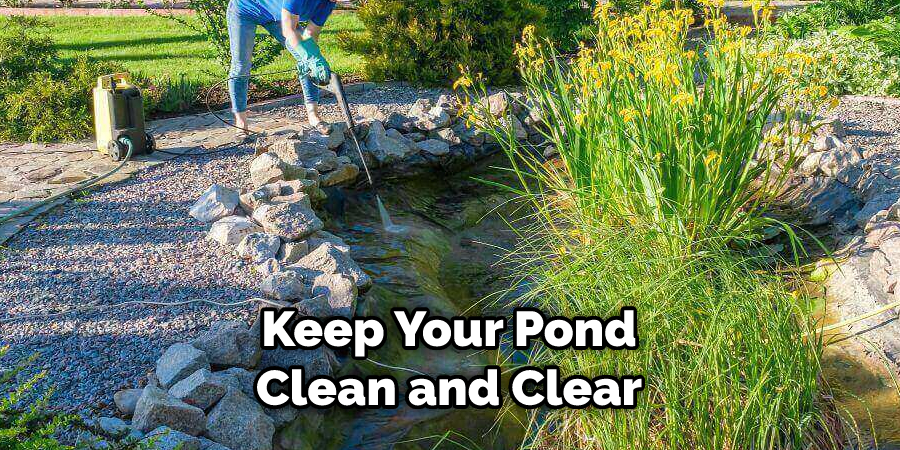
Conclusion
Pond maintenance is essential to help keep your pond clean, safe, and clear. It takes effort, but it’s worth it for the beauty of a healthy little ecosystem in your own yard. For starters, take the time to get rid of debris each week so that you can keep leaves, algae, and other organisms from taking over. To avoid the buildup of dirt and material on the pond floor below the surface, use a skimmer or pond net to keep things tidy.
You’ll also want to make sure you have an aeration system or pump installed in order to encourage the circulation of the water, which can prevent sludge and murky waters. These steps on how to keep small pond from turning green should set you up to enjoy a beautiful featured water element in your backyard. With a little ongoing upkeep, you will be able to bask in easy-to-maintain clear waters that naturally remain free of green!

